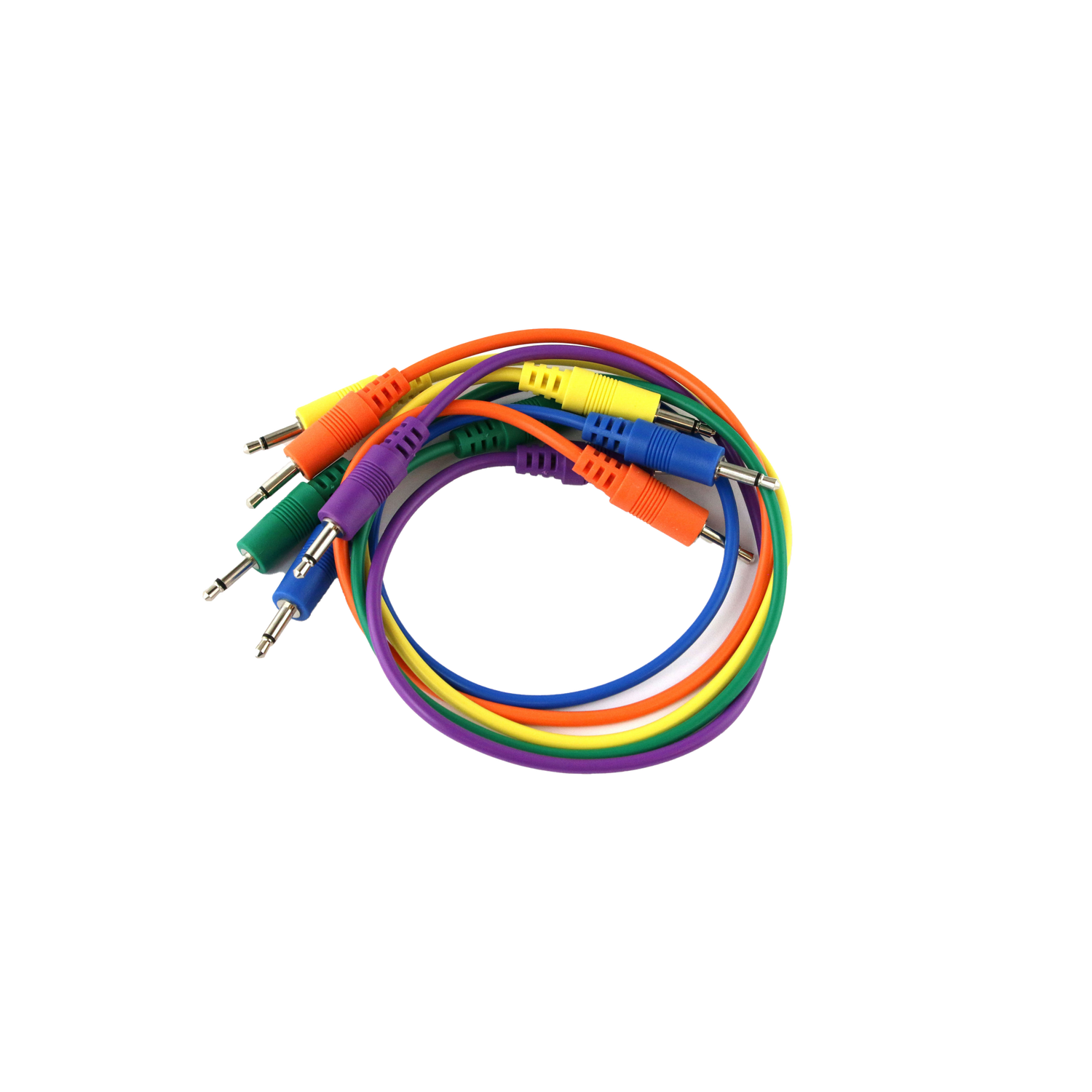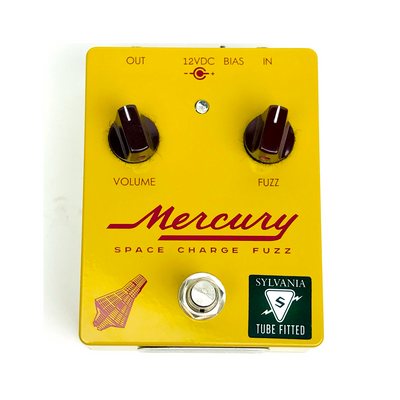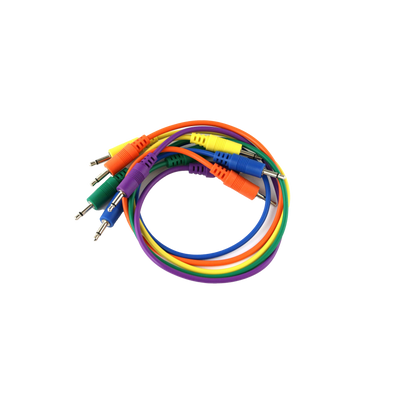Korg ARP 2600 FS, brand new, old stock (NOS)
Korg ARP 2600 FS, brand new, old stock (NOS)
Couldn't load pickup availability
Korg ARP 2600 FS, New Old Stock (N.O.S.)
Brand new, factory fresh - never opened. Full manufacturer warranty.
The ARP 2600 is brought back to life in a single, one-time-only production run. Now is your opportunity to own one of the most sought after and coveted instruments from the vintage synthesizer era. This limited-edition release is a loving reproduction of the 2600, handcrafted in Japan and includes USB and DIN-style MIDI connections, XLR audio outputs, plus the improved ARP 3620 Duophonic Keyboard with an added arpeggiator / sequencer. Your new ARP 2600 will arrive in a custom-branded hard shell case, complete with casters.
The Total Package
More than a synthesizer, the ARP 2600 is a complete sound design studio. Even today, the ARP 2600 stands as a bridge between the individual elements of modular synthesis and the immediacy of a production / performance instrument. Included are an ample supply of oscillators, envelopes, a filter and amplifier – all of the building blocks of analog synthesis. But the ARP 2600 goes even further, with a spring reverb tank and even a pair of built in monitor speakers. Also present is much of the versatility of a vintage modular system, including a ring modulation, lag and voltage processors, an envelope follower, audio preamp, a clock-able switch, noise source, a sample & hold module, signal inverters, an auxiliary mixer, and even a set of parallel-wired/multi jacks.
The ARP 2600 FS reproduces the sounds of these components at the circuit level. Under the supervision of David Friend, the co-founder of ARP Instruments, parts were carefully selected and every detail was adjusted to replicate the original unit's distinctive synthesis.
Profile of David Friend:
Co-founder of ARP Instruments, Inc. together with the founder Alan Robert Pearlman. In addition to designing the ARP 2600 and Odyssey, he was involved with the development of numerous products, and subsequently entered management, eventually becoming president of the company. His achievements as an entrepreneur have also been acclaimed, and in 2010 he received the "Entrepreneur of the Year" (Emerging Technology category) award from Ernst & Young. After serving as the President and CEO of Blue Archive, Inc., currently he serves as the President, CEO and Co-founder of Wasabi, as well as being a lecturer at MIT's Sloan School of Management. He is also an emeritus of the New England Conservatory and Berklee College of Music.
Normalled Pathways
Nearly every slider and switch on the ARP 2600 front panels is hard wired to specific control source. For example, the front panel controls allow the pitch of Oscillator 1 to be controlled by the keyboard (On/Off switch), the output of the Sample & Hold module (slider), the shape of the ADSR envelope generator (slider), and/or by the sine wave output of Oscillator 2 (slider), and each in varying amounts. These hardwired pathways provide massive amounts of immediate control that make excellent use of all the ARP 2600 has to offer, allowing the ARP 2600 to be played as is – no patching needed. In true modular fashion, inserting a patch cord into the jack associated with any hardwired control overrides that internal connection, letting you create a new signal path of your choosing. As a programming aid, the detailed panel graphics clearly show the available signal routings.
Patch Bay Precision
Unlike earlier modular synthesizers that relied on bulky 6.3mm (1/4") jacks and patch cords, the ARP 2600 uses a more streamlined 3.5mm (1/8”) jack that allows for more patch points to occupy the same amount of panel space, delivering more options and more versatility. Most of the patch points are arranged in a single row below the controls of the individual sound modules. This arrangement keeps the main panel clear and unobstructed for tweaking the controls during performance. Needless to say, these patchable connections and the onboard processors can be used to interact with nearly any modular or Eurorack synthesizer system.
3620 Keyboard
While faithful to the original design, the functionality of the 3620 Keyboard has been greatly enhanced for this limited ARP 2600 release. The 3620 Keyboard contains 49 full-size keys, aftertouch, portamento, and is also duophonic, allowing two keys to be played at once – Single or Multiple Triggering is available. In addition, the duophonic keyboard can use an optional foot switch to lock the interval between any two notes, without retuning the oscillators during performance. Vibrato can be added via a dedicated circuit controlled by aftertouch, or by the onboard LFO (Low Frequency Oscillator), using any of three available waveforms. Most noticeable is the addition of a flexible Arpeggiator that allows a user-defined pattern to be manually sequenced and played back. Still present are the original Pitch Bend knob and the Two Octave Up / Two Octave Down Transpose switch. Connecting the keyboard to the main unit now uses a secure eight-pin din cable.
Processing Powerhouse
The ARP 2600 reveals its modular nature by the unique assortment of valuable, esoteric, and individually patch-able modules it contains. To begin, there are a set of parallel-wired Multiple jacks that enhance the patching possibilities – allowing the same control signal to be sent to multiple locations, for example. Three independent Voltage Processors provide scalable control voltages, or can act to attenuate any control signal. Use the Lag Generator to delay the start of any control signal. The Noise Generator is tunable to deliver White, Pink, and Low-Frequency noise, plus everything in between. A series of three Inverters can reverse the polarity of any signal. The Electronic Switch can be sync’d to either the internal clock or any external clock signal, as can the Sample & Hold rate. Most importantly, the ARP 2600 includes a dedicated Preamp and Envelope Follower for processing an external audio signal.
The Oscillators
ARP Voltage Controlled Oscillators (VCO) are extremely stable in their tuning. All three oscillators feature Initial Tuning and Fine Tuning sliders, and every oscillator can be designated as an LFO (Low Frequency Oscillator) modulating oscillator or as an audio oscillator. (Additional LFO modulation sources are available on the ARP 3620 keyboard; included.) Each oscillator generates multiple wave shapes at once. Available Waves include Sawtooth, Square, Triangle, Sine, and Pulse. The Pulse wave of Oscillator 2 and Oscillator 3 include a manual Pulse Width control, and Pulse Width Modulation is available on Oscillator 2. One audio oscillator can be used to modulate the frequency of another audio oscillator to create analog FM effects.
The Filter
The ARP 2600 is equipped with a 4-pole Voltage Controlled Filter (VCF), offering a roll-off curve of -24dB per Octave. As with the oscillators, the ARP 2600 filter also offers a Fine Tuning slider. The addition of Fine Tuning allows precise and useful control of the pitch of a self-resonating filter. The input mixer stage of the VCF includes sliders for each Oscillator, the Noise Generator, and the output of the Ring Modulator. Over time, the ARP 2600 historically went through a number of changes; some were cosmetic, and some were more crucial to the sound. The Filter Type switch selects between a filter response more closely related to either earlier or later models of the ARP 2600.
The Envelopes
Two Envelope Transient Generators (EG) are available on the ARP 2600. The first is a full four-stage Attack, Decay, Sustain, and Release Envelope. The second EG offers variable Attack and Release only. The Manual Start button allows the Envelopes to be retriggered at any time, without using the keyboard. The Envelope module also provides both Gate and Trigger outputs – ideal for patching into another analog modular or Eurorack system.
The Amplifier
In order to produce and output sound, the ARP 2600 relies on a Voltage Controlled Amplifier (VCA) to bring the output up to a suitable level. The Amplifier features both Linear and Exponential control inputs, and the Initial Gain setting provides continuous output at its highest setting.
Over and Out
Following the VCA, the audio signal of the ARP 2600 passes through the Stereo Mixer section, the internal Spring Reverb tank, and on to the main outputs, the headphone jack, and the internal Left and Right speakers.
Plug and Play
The ARP 2600 is equipped with two low-impedance XLR outputs (Left and Right) for direct connection to a recording console or sound system – no direct boxes or line-matching transformers are required. A headphone output is also provided. MIDI is transmitted and received via old-school din-style IN, OUT, and THRU jacks, and also via USB. Three foot switch jacks (footswitches sold separately) on the 3620 Keyboard provide hands-free performance control over Portamento (On/Off or Momentary) and the Interval Latch. The front panel offers a Preamp input for processing another audio source.
Ground Zero of the Synthesizer Age
It would be impossible to overemphasize the importance of the original ARP 2600 analog synthesizer. The ARP 2600 stood alone, retaining all of the versatility of a massive modular system in a modern, portable, and eminently playable synthesizer. Over the next decade, sales of the 2600 continued to amass as ARP became the largest synthesizer company in America – and possibly the world.
The ARP 2600 drew support from all manner of sources. Alan R. Pearlman and David Friend’s unified design made it the ideal choice for academic use, and indeed, for many an early wave of synth enthusiasts, the ARP 2600 was the instrument they learned on. Professional musicians of all genres gravitated to the ARP 2600 for its incredible sounds and the satisfying hands-on panel scheme. Sound artist Ben Burtt used the ARP 2600 to voice the adorable droid R2-D2. Over the ensuing decades, the ARP 2600 has remained one of the most sought after and coveted instruments from the vintage synthesizer era, and has attained the most revered status among players, producers and sound designers.
Modular synthesizers of the day closely resembled today’s Eurorack systems, consisting of a powered cabinet housing a selection of synthesizer modules, which were in turn connected using patch cords. While other manufacturers were busy shedding some of the esoteric versatility of the modular synthesizer to create a simpler instrument for the novice performer, the ARP 2600 offered all of the elements needed to create a self-sufficient sound design studio.
Free bundle of music software
The ARP 2600 FS comes with a diverse variety of music software from Izotope including “Ozone Elements” which lets you not only create songs but also master them using AI, “Skoove” which will help you improve your keyboard playing skills, “Reason Lite” DAW software, as well as software synths from KORG and other brands.
In other words, the moment you get your hands on this synthesizer you'll have a variety of tools to help you take your music to the next level.
ARP 2600 FS Operating temperature range0 – +40 °C (non‐condensing)
Maximum Polyphony2 voices for duo phonic; normally monophonic
VCO-1 (Voltage Controlled Oscilator 1)
WaveformsSawtooth, square
Frequency rangeApprox. 0.03 Hz – 30 Hz (low freq. mode)
Approx. 10 Hz - 10 kHz (audio mode)
Voltage controlled response1V/oct.
VCO-2 (Voltage Controlled Oscilator 2)
WaveformsSawtooth, pulse (dynamic pulse), triangle, sine
Frequency rangeApprox. 0.03 Hz – 30 Hz (low freq. mode)
Approx. 10 Hz - 10 kHz (audio mode)
Pulse width10% – 90%
Voltage controlled response1V/oct.
VCO-3 (Voltage Controlled Oscilator 3)
WaveformsSawtooth, pulse (dynamic pulse)
Frequency rangeApprox. 0.03 Hz - 30 Hz (low freq. mode)
Approx. 10 Hz - 10 kHz (audio mode)
Pulse width10% – 90%
Voltage controlled response1V/oct.
VCF (Voltage Controlled Filter)
TypeLow-pass (TYPE I : early 24 dB/oct., TYPE II: late 24 dB/oct.)
Frequency rangeApprox. 10 Hz - 10 kHz
Resonance1/2 - self oscillate
VCA (Voltage Controlled Amplifier)
Control voltageAR type (internally connected)
ADSR type (internally connected)
Noise generatorNoise spectrum types (white and pink)
RING MODULATOR
TypeAnalog multiplier
Input signal (Internally connected)VCO-1 sawtooth wave, VCO-2 sine wave
SAMPLE & HOLD
Sampled signalNoise (internally connected)
AUDIO OUTPUT JACKS
Front Panel (LEFT, RIGHT OUTPUT jacks
Connectorφ3.5 mm monaural phone jack
Maximum output level+9 dBu @ 10 kΩ load
Output impedance1.2 kΩ
Side Panel R
ConnectorXLR端子
XLR connector
Maximum output level+4 dBu @ 600Ω load
Output impedance1.2kΩ
HEADPHONES JACK
Connectorφ6.3 mm stereo phone jack
Maximum output level50 mW + 50 mW @ 33Ω load
Output impedance20Ω
EXTERNAL AUDIO INPUT (PREAMPLIFIER INPUT) JACK
Connectorφ3.5 mm monaural phone jack
Maximum input level−10 dBu
Input impedance100kΩ
MIDI connectorIN, OUT, THRU
USB portType B ARP 3620 (keyboard unit) Keyboard49-note (with aftertouch, no velocity sensitivity)
CV output voltage
UPPER VOICE−3V–+10V, 1V/oct.
LOWER VOICE−3V–+7V, 1V/oct.
LFO output voltage
TRIANGLE±5 V, 10 Vp-p
SQUARE WAVE+10 V, 10 Vp-p
DELAYED SINE WAVE±3 V, 6 Vp-p
EXTERNAL VIBRATO input voltageMax. ±10 V
VIBRATO DEPTH sliderMax. 1 octave
VIBRATO DELAY slider0 – 2.5 sec
LFO SPEED sliderApprox. 0.25 – 25 Hz
PITCH BEND control±1 octave
TRANSPOSE switch±2 octave
PORTAMENTO SPEED sliderMaximum speed: about 0.25 msec/oct
Minimum speed: about 0.5 sec/oct
PORTAMENTO foot switchKORG PS-1/PS-3 pedal switch
INTERVAL foot switchKORG PS-1/PS-3 pedal switch
GATE output voltage (on ARP 2600 FS panel)0 V at all keys up, +10 V at key on
TRIGGER output voltage (on ARP 2600 FS panel)+10 V, 0.5 ms pulse wave at key on
ArpeggiatorOFF, AUTO, UP, DOWN, UP&DOWN, RANDOM, SEQ PLAY
General Power supplyAC power supply terminal
Power consumption30W
Dimensions (W × D × H), Weight
ARP 2600 FS836 x 232 x 509 mm / 32.9 x 9.13 x 20.0 inches, 19.3 kg / 42.55 lbs.
ARP 3620914 x 274 x 158 mm / 36.0 x 10.8 x 6.2 inches,11.3 kg / 24.91 lbs.
Included ItemsRoad case, Casters (x4), AC power cord, 8-pin DIN cable, 1,100 mm patch cables (x5), 600 mm patch cables (x5), Owner’s manual, Original English manual (replica)
Accessories (Sold separately)KORG PS-1/PS-3 pedal switch
*All products names and specification names are trademarks or registered trademarks of their respective owners.*Appearance and specifications of products are subject to change without notice.
Share

























